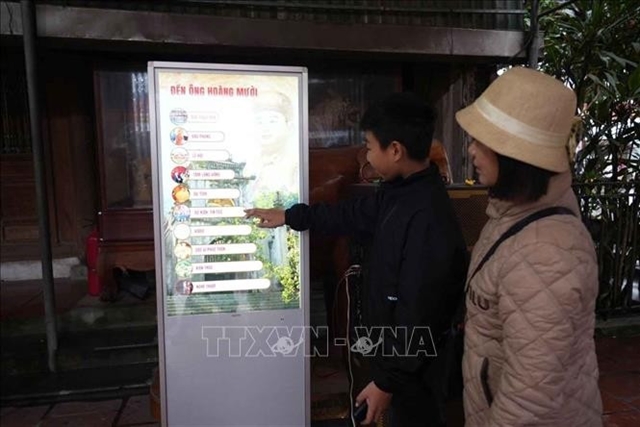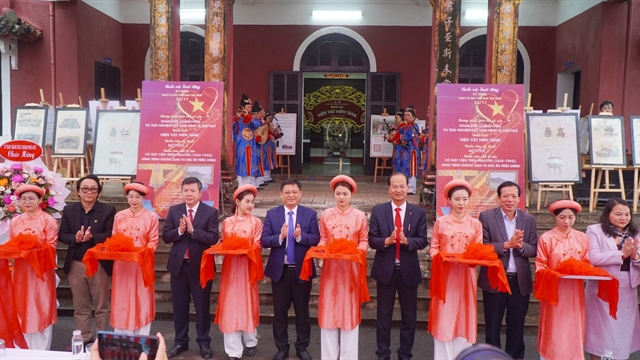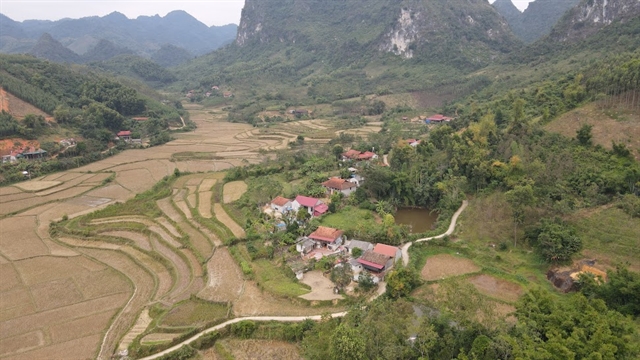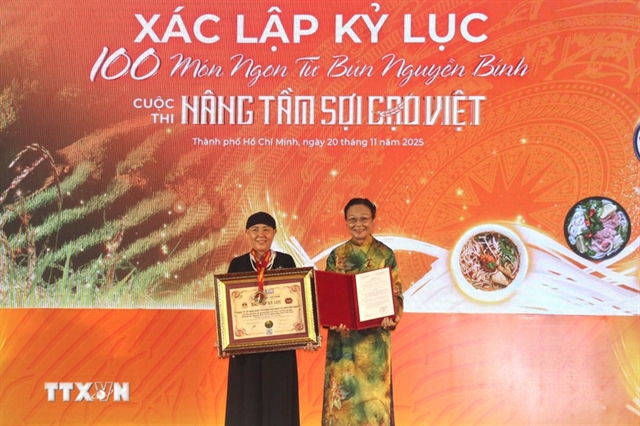 Life & Style
Life & Style

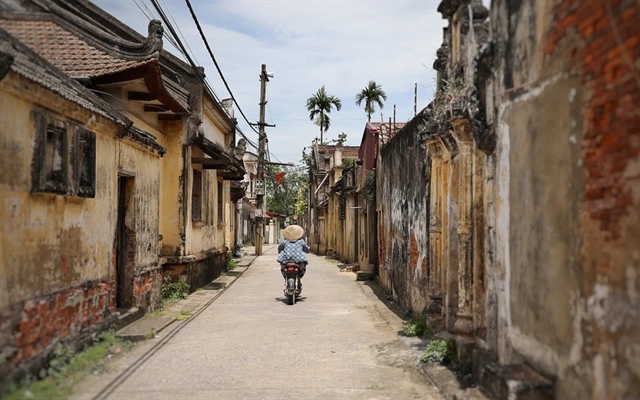
|
| Cựu Village charms tourists with its peaceful atmosphere and unique architecture. VNA/VNS Photo |
HÀ NỘI Exploiting the value of Cựu ancient village for creative activities will bring significant benefits for cultural preservation, development and tourism, said experts at the recent conference on the preservation of the village in contemporary life.
Cựu is a 500-year-old ancient village located in Vân Từ Commune, Hà Nội’s Phú Xuyên District, about 40km from the city centre. It is considered the second most famous ancient village in Hà Nội, alter Đường Lâm Village in Sơn Tây Town.
Despite the ups and downs of history, this village still retains its distinctive traditional features, making it not only a precious cultural, historical and artistic museum, but also a potential tourist destination.
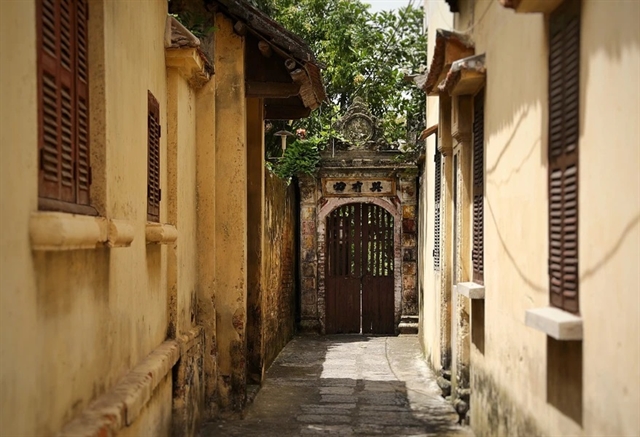
|
| A house in Cựu Village which has retained its ancient features over many years. VNA/VNS Photo |
Cựu Village takes pride in its ancient villas that feature a unique blend of Vietnamese and French architecture, constructed during the early 20th century. Dozens of villas were built in the village during the 1920 – 1945 period with typical features - arched architecture, flowing roof and having ironwood as material. Small details of local houses are often decorated with flowers, cranes and phoenix.
Many people call Cựu Village the "western village" because the architectural style of houses there is somewhat different from traditional houses usually found in other old villages in northern Việt Nam.
The village was famous for needlework and embroidery skills, and known as the Number One Tailor Village in Hà Nội. Hundreds of western visitors came here for made-to-order suits.
Over the years, local authorities managed to preserve numerous valuable architectural villas, as well as religious structures and public spaces typically found in the Red River Delta region like village gates, banyan trees, wells and communal yards.
Nowadays, architectural heritage houses are in between modern houses in the village. Over time, some moss-covered houses are gradually degrading due to a lack of care and restoration.
According to Dr Lê Quỳnh Chi from the Department of Architecture and Planning at Hanoi University of Civil Engineering, Cựu Village holds numerous creative cultural values that could serve as a foundation for creative activities.
“The history of the village represents the revival of creativity amidst economic transformations. Its architectural landscape is characterised by a creative and spontaneous blend of Western architectural influences on the traditional foundation.
“Therefore, if the values of the ancient village are harnessed for creative activities, it will bring about significant benefits for cultural preservation, development and tourism,” she said.
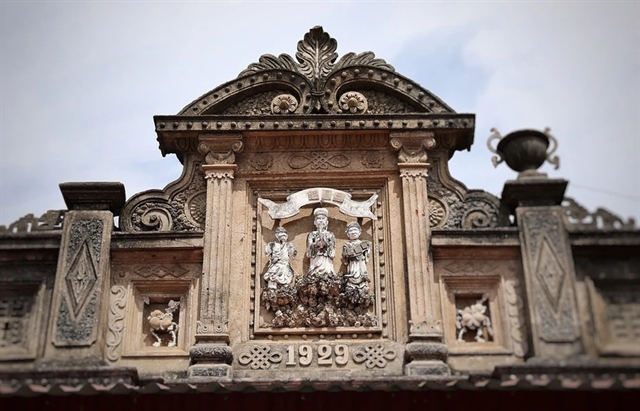
|
| The most ancient house in Cựu Villlage was built in 1929 with decorative patterns using mixed Asia-Europe architectural style. VNA/VNS Photo |
According to experts, it is possible to apply the model of developing craft village - tourism and heritage village - tourism to Cựu Village.
This model focuses on cultural and community-based tourism, using the cultural values of traditional villages as a foundation, with the aim to create a sustainable tourism economy and contribute to preserving traditional village culture while building a new rural area.
Dr Mongkol Khan from the Faculty of Architecture at Rajamangala University of Technology, Thanyaburi, Thailand, said the current tourism boom is promoting the revival of cultural heritage.
To fully utilise the values of Cựu Village's heritage, the community needs to actively participate in heritage restoration projects. Engaging the community in the preservation and restoration process nurtures a sense of pride and social cohesion, he added.
He also mentioned the importance of encouraging creativity and innovation in the preservation and promotion of heritage values.
“Cultural heritage can serve as a source of inspiration for creative industries. Revitalising heritage spaces can act as incubators for innovation, showcasing artistic expression and fostering new cultural initiatives.
“There are several creative approaches that can be applied to craft villages and ancient villages in Hà Nội, like repurposing spaces into art galleries or cultural centres, utilising new technologies such as 3D scanning, and collaborating with international organisations to preserve the unique craftsmanship.
“Hà Nội also needs to implement campaigns to raise community awareness about the importance of cultural heritage and strive for comprehensive preservation of craft villages,” he added.
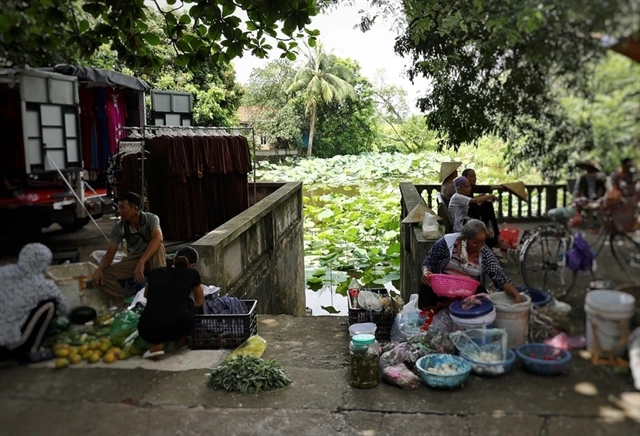
|
| A part of the market in Cựu Village. VNA/VNS Photo |
According to Nguyễn Mạnh Huy, Vice Chairman of the People's Committee of Phú Xuyên District, the local authorities are working on renovation plans to preserve the historical values of old houses in Cựu Village.
“In the near future, the tailoring craft in the village will also be restored to create stable income for the local residents. There will also be plans to develop a fashion brand name of Cựu village. The designs and tailoring will be carried out by Cựu villagers themselves,” he said. VNS

